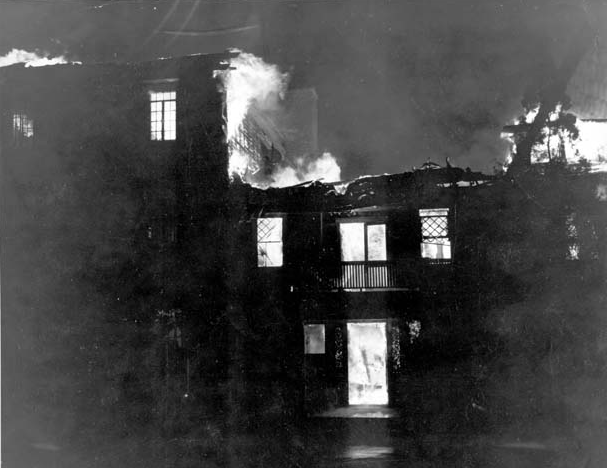Highland Hospital was founded in 1904 by Dr. Robert S. Carroll. The facility offered treatment to those suffering from mental health issues or “nervous disease,” as it was referred to at the time. Originally known as “Dr. Carroll’s Sanatorium,” its name was changed to Highland Hospital in 1912.
Among its patients was artist and writer Zelda Sayre Fitzgerald — wife of writer F. Scott Fitzgerald. Her time at Highland is chronicled in the 1970 Nancy Milford biography, Zelda. In it, Milford notes the prominent role that exercise played in the treatment of patients. One particular activity involved climbing hills:
“This was not hiking, nor was it supposed to be a particularly enjoyable exercise; it was to teach the disturbed to overcome obstacles by learning perseverance. A nurse who was at the hospital at the time said that the exercise ‘was to accustom the patient to the reality of endeavor, endless and routine. The monotonous plodding along of everyday life might be a sound analogy.’”
By 1939, Carroll donated the hospital to Duke University; Carroll, however, remained the medical director until his retirement on Jan. 1, 1945.
In 1948, the hospital gained national attention when nine patients, including Zelda, perished in a fire at Highland’s central building. An electric coffee urn in its kitchen was the source of the flames. While the facility had adequate fire escapes, the building did not have a sprinkler system. As noted in a March 12, 1948 Asheville Citizen article, firemen were also hampered in their rescue by “heavily screened porches and windows shackled with chains as a precautionary measure to keep patients from jumping out.”
The Asheville Citizen goes on to note the crowds of people who stopped by throughout the night and early morning hours as firemen battled the flames:
“Smoke and steam from the burning structure began to die down [at] about 9:30 a.m. And the sun burned through mist and clouds at about the same time. The hundreds of excited persons who stayed on the scene of the fire for hours had gone home and were replaced by other crowds. The safety ropes, stretched from tree to tree around the building, were patrolled by city policemen while the crowds silently waited for the appearance of firemen with bodies from the depths of the charred debris.”

A criminal investigation would follow. On April 1, 1948 the Asheville Citizen reported that the coroner’s jury concluded that “’there was negligence, but not to the extent to be classed as culpable negligence[.]'”
Highland Hospital nurse Doris Jane Anderson was among those who testified. According to a March 27, 1948 Asheville Citizen article, Anderson discovered the kitchen table afire at 11:35 p.m. Its flames rose about a foot, creating the appearance of “‘one of those fiery hoops animals jump through in circuses,'” Anderson noted in her testimony. When asked why she hadn’t tried to put it out, the nurse cited fear: She had never witnessed a “destroying” fire before.
The kitchen’s dumb-waiter shaft was lined with plaster and mason boards, rather than the required metal sheets. This helped accelerate the flames throughout the building.
Today there is a plaque located at the building’s former site. It’s in memory of Zelda Sayre Fitzgerald. On the plaque is a quote from a letter Zelda wrote to F. Scott. It reads: “I don’t need anything except hope, which I can’t find by looking backwards or forwards, so I suppose the thing is to shut my eyes.”




It is my understanding that the ones who perished in the fire were locked in their units.